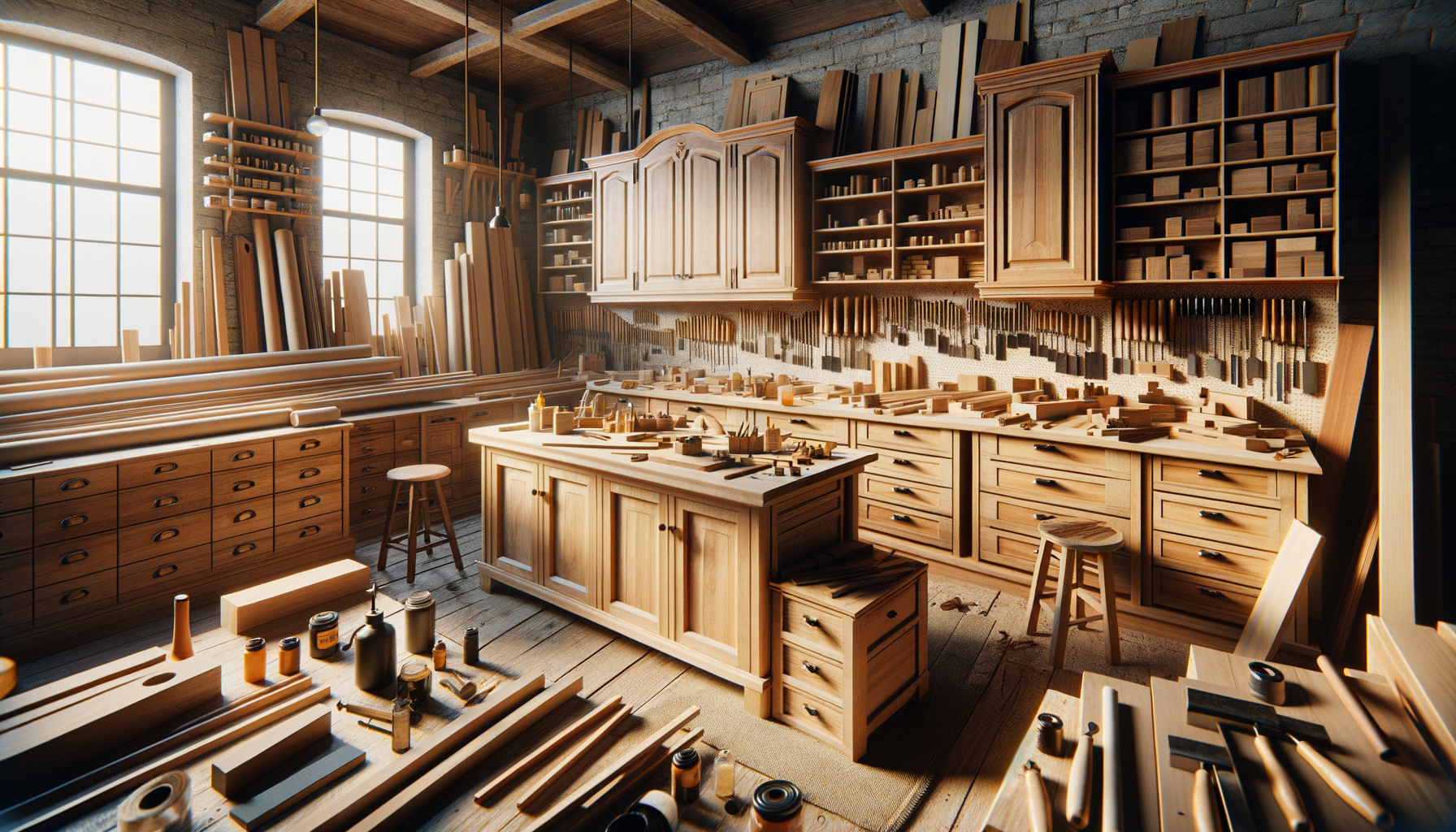Cabinet Makers are skilled artisans who specialize in the design and construction of cabinets and furniture. They utilize various materials and techniques to create functional and aesthetically pleasing storage solutions for homes and businesses. Their work often involves custom designs tailored to meet specific client needs, ensuring that each piece is unique and fits perfectly within its intended space.

The Role of Cabinet Makers in Modern Design
Cabinet makers play a pivotal role in modern interior design, transforming spaces with their artistry and technical skills. These artisans are not just craftsmen; they are designers who blend functionality with aesthetics. They work closely with clients to understand their needs and preferences, ensuring that each piece of furniture complements the existing decor and enhances the overall ambiance of a room.
One of the unique aspects of cabinet making is the ability to customize designs. Unlike mass-produced furniture, custom cabinets are tailored to fit specific spaces, providing solutions that are both practical and beautiful. This customization extends to the choice of materials, finishes, and hardware, allowing cabinet makers to create truly unique pieces that reflect the personality and style of the homeowner.
In today’s world, where sustainability is a growing concern, cabinet makers often incorporate eco-friendly materials and practices into their work. By selecting sustainable wood sources and using non-toxic finishes, they contribute to a healthier environment while crafting durable and timeless furniture.
Materials and Techniques in Cabinet Making
The choice of materials is a critical aspect of cabinet making, influencing both the appearance and durability of the final product. Cabinet makers commonly use hardwoods such as oak, cherry, and maple, prized for their strength and natural beauty. These woods offer a rich variety of grains and colors, allowing for a wide range of design possibilities.
In addition to traditional woods, cabinet makers may also use engineered materials like plywood and MDF (medium-density fiberboard). These materials provide stability and are often more cost-effective, making them a popular choice for certain projects. The selection of materials often depends on the intended use of the cabinet, the client’s budget, and the desired aesthetic.
Techniques in cabinet making have evolved over time, incorporating both traditional handcrafting methods and modern technology. While some artisans still rely on hand tools to achieve intricate details, others use CNC (computer numerical control) machines for precision cutting and shaping. This blend of old and new techniques allows cabinet makers to produce high-quality pieces efficiently.
The Customization Process: From Concept to Creation
The journey of creating a custom cabinet begins with a detailed consultation between the cabinet maker and the client. This initial meeting is crucial for understanding the client’s vision, preferences, and functional requirements. The cabinet maker takes measurements and discusses various design options, including the layout, style, and materials.
Once the design is finalized, the cabinet maker creates detailed plans and 3D models to visualize the finished product. This step ensures that both parties have a clear understanding of the project before construction begins. During the building phase, the cabinet maker meticulously crafts each component, paying close attention to detail and quality.
After the construction is complete, the cabinet is assembled and finished. This involves sanding, staining, or painting the wood to achieve the desired look. The final step is the installation, where the cabinet maker ensures that the piece fits perfectly within the space and functions as intended.
The Impact of Cabinet Makers on Home Value
Investing in custom cabinetry can significantly enhance the value of a home. Well-crafted cabinets not only improve the functionality of a space but also add a touch of luxury and sophistication. Potential buyers often appreciate the attention to detail and quality that custom cabinets represent, making them a desirable feature in the real estate market.
Custom cabinets can also be tailored to maximize storage and efficiency, a crucial factor for many homeowners. In kitchens, for example, well-designed cabinets can make the most of available space, providing ample storage for cookware, utensils, and pantry items. This practical aspect, combined with aesthetic appeal, can make a home more attractive to prospective buyers.
Moreover, the durability of custom cabinets ensures that they remain in excellent condition for many years, contributing to the long-term value of the property. By choosing high-quality materials and expert craftsmanship, homeowners can enjoy the benefits of their investment for generations.
Choosing the Right Cabinet Maker for Your Project
Selecting the right cabinet maker is essential for ensuring that your project meets your expectations. When evaluating potential candidates, consider their experience, portfolio, and customer reviews. An experienced cabinet maker will have a track record of successful projects and satisfied clients, providing reassurance that your project is in capable hands.
It’s also important to discuss your budget and timeline with the cabinet maker upfront. Transparency in these areas will help avoid misunderstandings and ensure that the project progresses smoothly. A good cabinet maker will provide a detailed estimate and keep you informed throughout the process.
Lastly, consider the cabinet maker’s communication style and willingness to collaborate. A successful project often involves a partnership between the client and the artisan, with open communication and mutual respect. By choosing a cabinet maker who listens to your ideas and provides expert guidance, you can achieve a result that exceeds your expectations.